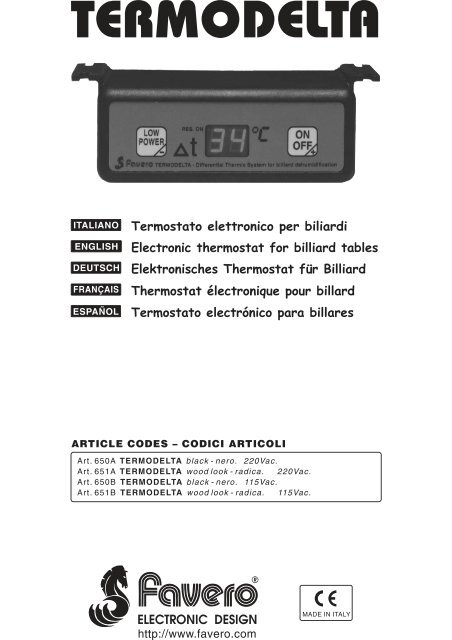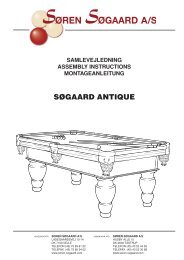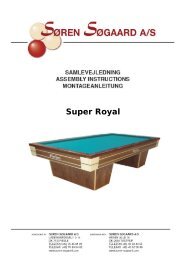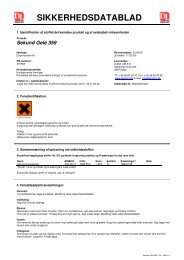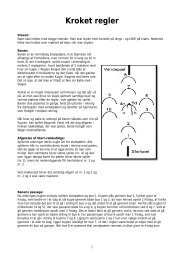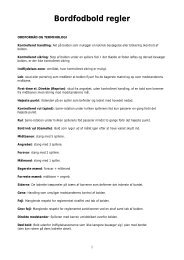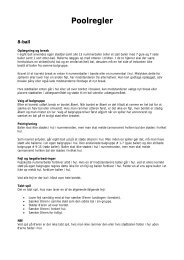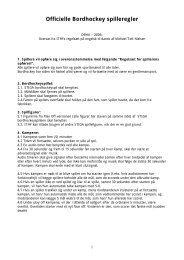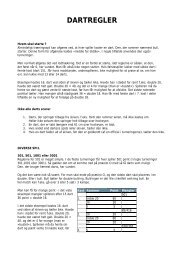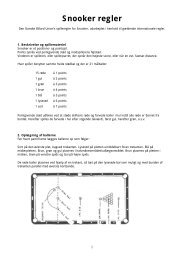Termostato electrónico para billares Thermostat ... - FAVERO
Termostato electrónico para billares Thermostat ... - FAVERO
Termostato electrónico para billares Thermostat ... - FAVERO
You also want an ePaper? Increase the reach of your titles
YUMPU automatically turns print PDFs into web optimized ePapers that Google loves.
TERMODELTAITALIANOENGLISHDEUTSCHFRANÇAISESPAÑOL<strong>Termostato</strong> elettronico per biliardiElectronic thermostat for billiard tablesElektronisches <strong>Thermostat</strong> für Billiard<strong>Thermostat</strong> électronique pour billard<strong>Termostato</strong> electrónico <strong>para</strong> <strong>billares</strong>ARTICLE CODES – CODICI ARTICOLIArt. 650AArt. 651AArt. 650BArt. 651BTERMODELTATERMODELTATERMODELTATERMODELTAblack - nero. 220Vac.wood look - radica. 220Vac.black - nero. 115Vac.wood look - radica. 115Vac.RELECTRONIC DESIGNhttp://www.favero.comMADE IN ITALY
ITALIANO TERMODELTA ISTRUZIONI TECNICHEAppositamente studiato per il riscaldamento del biliardo.Permette di scegliere tra 2 modalità di funzionamento: la prima, più tradizionale, mantiene il biliardo alla temperaturaprogrammata; la seconda, più innovativa, porta il biliardo ad avere una temperatura superiore a quella dell'ambiente di unvalore costante e programmabile. Quest'ultima modalità garantisce il massimo risultato con il minimo stress termico delbiliardo.Incorpora inoltre la funzione LOW POWER per mantenere il biliardo tiepido nelle ore notturne con un consumo minimo dienergia. Questo evita il deposito di umidità e consente un rapido ripristino della temperatura il mattino seguente. Lafunzione LOW POWER è attivabile con l'apposito tasto.INSTALLAZIONEforo sonda Ø6mm.ResistenzaFig. 1220 Vac (Art.65xA)115 Vac (Art.65xB)I collegamenti devono essere effettuati da personale qualificato seguendo lo schema in Fig.1. La resistenza diriscaldamento deve avere una potenza massima di 2200 Watt con alimentazione 220 Vac (Art.65xA) e 1150 Watt conalimentazione 115 Vac (Art.65xB). Apparecchiatura in classe II.ATTENZIONE: L'alimentazione elettrica deve essere provvista di interruttore automatico 10A di sezionamentoa monte.PROGRAMMAZIONE E FUNZIONAMENTOUn punto luminoso lampeggiante indicaquando la resistenza sta riscaldando88POWERLOWONOFF– +Tasto nascosto perla programmazioneFig. 2MODO 1Funzionamento con temperatura fissa (tradizionale).Per accedere alla programmazione tenere premuto per 4 secondi il tasto nascosto situato sul frontale fra il tasto ON/OFFed il display rosso (vedi Fig. 2).ooAppare un valore lampeggiante, compreso tra 25 C e 42 C, che indica la temperatura alla quale verrà portato il biliardo.Tale temperatura può essere impostata, con i tasti + (ON/OFF) e – (LOW POWER) . Se il valore che appare è inferiore aoo25 C significa che il termostato sta funzionando nel MODO2; in tal caso occorre portare il suddetto valore sopra i 25 C. Siooconsigliano valori compresi tra 33 C e 37 C.Ripremere il tasto nascosto per terminare la programmazione.oIn questa modalità di funzionamento la funzione LOW POWER mantiene il biliardo ad una temperatura inferiore di 5~6 Crispetto a quella prefissata.MODO 2Funzionamento con temperatura variabile con l'ambiente.Per accedere alla programmazione tenere premuto per 4 secondi il tasto nascosto situato sul frontale fra il tasto ON/OFFed il display rosso (vedi Fig. 2).oAppare un valore lampeggiante inferiore a 25 C. Tale valore rappresenta il "DELTA T" , ovvero la differenza di temperaturaoche si desidera avere fra il biliardo e l'ambiente. Se il valore che appare è superiore o uguale a 25 C significa che ilotermostato sta funzionando nel MODO1; in tal caso occorre portare il suddetto valore sotto i 25 C.ooIl valore di "DELTA T" , che appare con un lampeggio lento, può essere impostato ad un valore compreso tra 8 C e 20 C conitasti+ (ON/OFF) e – (LOW POWER) .ooSi consigliano valori compresi tra 12 C e 16 C.Ripremendo nuovamente il tasto nascosto si passa alla selezione della temperatura massima raggiungibile. Questa serve alimitare la temperatura del biliardo quando c'è una elevata temperatura ambiente. Il suo valore appare con un lampeggioo o opiù veloce e può essere impostato da 25 C a 42 C, sempre con i tasti + e –. Il valore consigliato è 37 C. Ripremere il tastonascosto per terminare la programmazione.Il display visualizzerà la differenza di temperatura fra il biliardo e l'ambiente ed inoltre, ogni 10 sec., visualizzerà per 2 sec.la temperatura del biliardo.oIn questa modalità di funzionamento la funzione LOW POWER mantiene il biliardo ad una temperatura di 4~5 C superiore aquella dell'ambiente.
ENGLISH TERMODELTA TECHNICAL INSTRUCTIONSStudied especially for dehumidifying billiard tables.It allows to choose between two operation modes: the first, more traditional one, keeps the billiard table at theprogrammed temperature; the second, more innovative one, brings it to a temperature higher than room temperature by aconstant and programmable value. This latter mode ensures top performance with minimum thermal stress of the billiardtable.It also features the LOW POWER function, to keep the billiard table warm at night with minimum energy consumption. Thisavoids humidity deposits and permits to reach the pre-set temperature quickly the next morning. The LOW POWERfunction is activated by pressing the special button.INSTALLATIONprobe hole Ø 6 mm.ResistorFig. 1220 Vac (Art.65xA)115 Vac (Art.65xB)Connections have to be carried out by qualified persons following the diagram in fig.1. The resistor must have a maximumpower of 2200 Watt with 220 Vac (Art.65xA) power supply and 1150 Watt with 115 Vac (Art.65xB) power supply. Class IIdevice.WARNING: The power supply must be equipped with automatic 10A overload reset switch.PROGRAMMING and OPERATINGA flashing dot indicatesthe resistor is heating up.88POWERLOWONOFF– +Hidden programmingbuttonFig. 2MODE 1Operation at fixed temperature (conventional).To access programming mode, keep the hidden button (which is at the front of the device between the ON/OFF and the reddisplay) pressed for 4 seconds (see Fig. 2).ooA flashing number between 25 C e 42 C will appear, which indicates the temperature to which the billiard will be brought.oThis temperature can be set with the + (ON/OFF) and – (LOW POWER) buttons. If the number is lower than 25 C, thisomeans the thermostat is operating in MODE 2, in which case the above mentioned value must be brought above 25 C.ooValues between 33 C and 37 C are recommended.Press again the hidden button to end programming.oIn this operating mode the LOW POWER function keeps the billiard at a temperature 5~6 C lower than the pre-set one.MODE 2Operation at varying temperature depending on room temperature.To access programming mode, keep the hidden button (which is at the front of the device between the ON/OFF and the reddisplay) pressed for 4 seconds (see Fig. 2).oA flashing number lower than 25 C will appear. This temperature represents "DELTA T" , that is, the desired temperatureodifference between the billiard and the room. If the number is higher than or equal to 25 C, this means the thermostat isooperating in MODE 1, in which case the above mentioned value must be brought below 25 C.ooThe "DELTA T" value, which flashes slowly, can be set at a value between 8 C and 20 C with the + (ON/OFF) and – (LOWPOWER) buttons.ooValues between 12 C and 16 C are recommended.By pressing again the hidden button it is possible to select the maximum reachable temperature. This is to limit thetemperature reached by the billiard when the room temperature is high. Its value flashes more quickly on the display andoocan be set between 25 C and 42 C, always with the + and – buttons.oThe recommended value is 37 C. Press the hidden button again to end programming.The display will indicate the temperature difference between the billiard and the room, and will also indicate the billiard’stemperature every 10 seconds and for 2 seconds.oIn this operating mode the LOW POWER function keeps the billiard at a temperature 4~5 C higher than room temperature.
ESPAÑOLTERMODELTAINSTRUCCIONES TÉCNICASEspecialmente estudiado <strong>para</strong> el calentamiento del billar.Presenta 2 formas de funcionamiento: la primera, la más tradicional, mantiene el billar a la temperatura programada; lasegunda, más innovadora, calienta el billar hasta una temperatura superior a la del ambiente en un valor constante yprogramable. Esta última forma de funcionamiento garantiza el máximo resultado con el mínimo estrés térmico del billar.Incorpora también la función LOW POWER <strong>para</strong> mantener el billar tibio en las horas nocturnas, con un consumo mínimo deenergía; esto evita el depósito de humedad y permite un rápido restablecimiento de la temperatura al día siguiente.La función LOW POWER puede activarse por medio de la tecla al efecto.INSTALACIÓNorificio sonda Ø6mm.ResistenciaFig. 1220 Vac (Art.65xA)115 Vac (Art.65xB)Las conexiones deben ser llevadas a cabo por personal cualificado siguiendo el diagrama que se muestra en la figura n. 1.La resistencia de calentamiento debe tener una potencia máxima de 2.200 W con una tensión de alimentación de 220Vca(Art. 65xA) y 1.150W con una tensión alimentación de 115Vca (Art. 65xB). Equipo de clase II.ATENCIÓN: La alimentación eléctrica debe estar provista de interruptor automático de 10A con aislamiento.PROGRAMACIÓN y FUNCIONAMIENTOUn punto luminoso intermitente indicaque la resistencia se está calentando.88POWERLOWONOFF– +Teclaoculta<strong>para</strong>la programación.Fig. 2MODO 1 Funcionamiento con temperatura fija (tradicional).Para acceder a la programación, mantener presionada la tecla oculta situada en la parte delantera entre la tecla ON/OFF yoel display de color rojo (véase fig. 2) durante 4 segundos. Se visualiza una valor intermitente, comprendido entre 25 C yo42 C, que indica la temperatura a la cual se calentará el billar. Esta temperatura puede fijarse con las teclas + (ON/OFF) yo– (LOW POWER) . Si el valor que se visualiza es inferior a 25 C, significa que el termostato está funcionando en el MODO2;oen este caso, es preciso aumentar la temperatura del termostato hasta una valor superior a los 25 C. Se recomiendanoovalores comprendidos entre 33 C y 37 C.Pulsar de nuevo la tecla oculta <strong>para</strong> terminar la programación.oLa función LOW POWER en este modo de funcionamiento mantiene el billar en una temperatura inferior a los 5~6 Crespecto a la fijada.MODO 2 Funcionamiento con temperatura variable con el ambiente.Para acceder a la programación, mantener pulsada la tecla oculta situada en la parte delantera entre la tecla ON/OFF y eldisplay de color rojo (véase fig. 2) durante 4 segundos.oSe visualiza un valor intermitente inferior a 25 C. Este valor representa el “DELTA T” ; es decir, la diferencia de temperaturaoque se desea tener entre el billar y el ambiente. Si el valor que se visualiza es superior o igual a 25 C, significa que eltermostato está funcionando en el MODO1; en este caso es preciso disminuir la temperatura del termostato hasta una valoroinferior a los 25 C.El valor de “DELTA T” , que se visualiza con una intermitencia lenta, puede fijarse con las teclas + (ON/OFF) y – (LOWo o o oPOWER) en un valor comprendido entre 8 C y 20 C. Se recomiendan valores comprendidos entre 12 C y 16 C.Si se pulsa de nuevo la tecla oculta, se pasa a la selección de la temperatura máxima alcanzable. Ésta sirve <strong>para</strong> limitar latemperatura del billar en presencia de una elevada temperatura ambiente. Su valor se visualiza con una intermitencia máso o orápida y puede fijarse con las teclas + (ON/OFF) y – (LOW POWER) entre 25 C y 42 C. El valor recomendado es de 37 C.Pulsar de nuevo la tecla oculta <strong>para</strong> terminar la programación.El display visualizará la diferencia de temperatura entre el billar y el ambiente y, además, cada 10 segundos, visualizará latemperatura del billar por 2 segundos.oCon este modo de funcionamiento la función LOW POWER mantiene el billar en una temperatura de 4~5 C superior a la delambiente.


